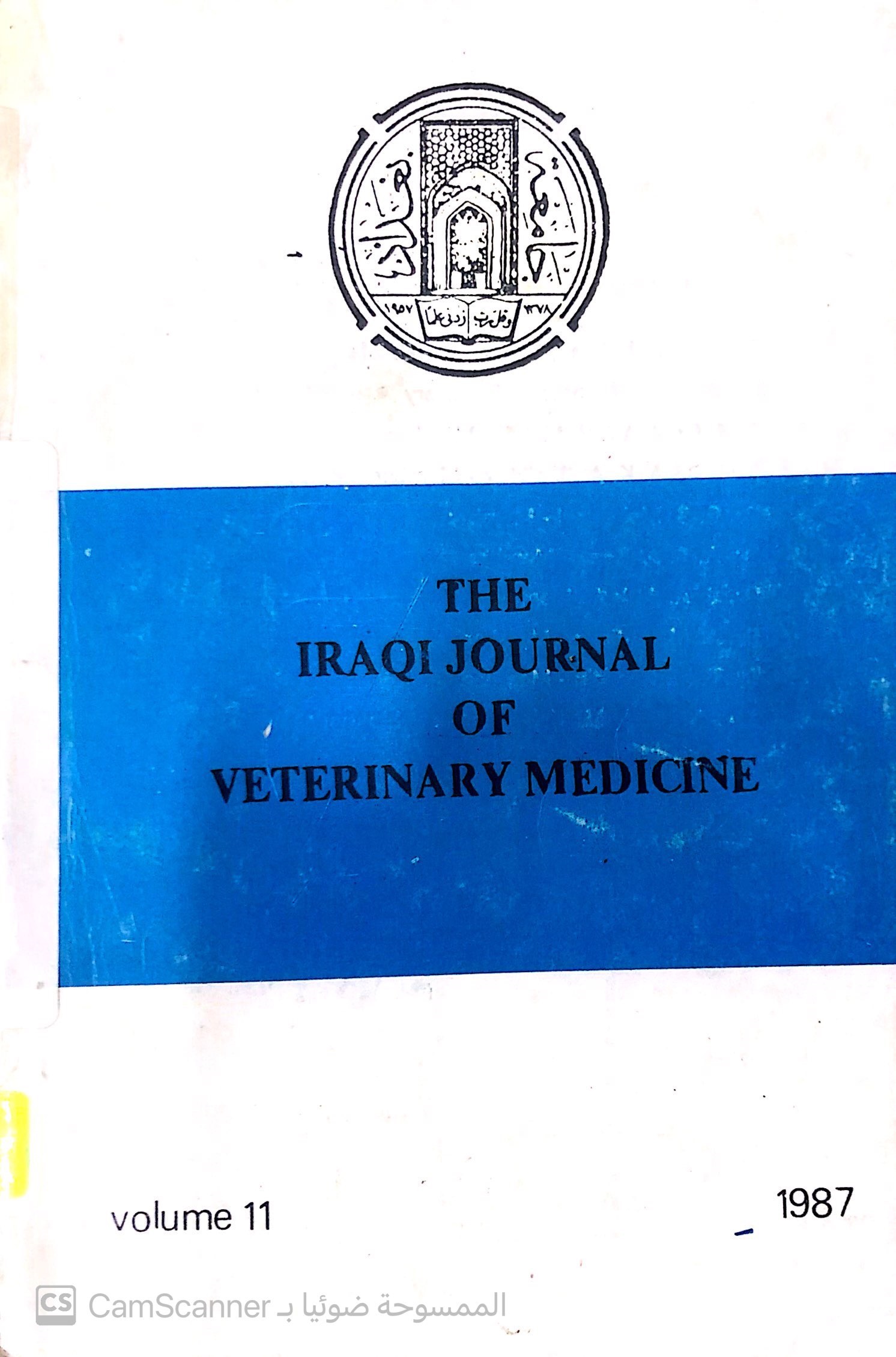BIPHASIC THERMAL DEATH TIME CURVES AT HIGH AND ULTRAHIGH TEMPERATURES OF BACILLUS SUBTILIS HU 1 SPORES
Main Article Content
Abstract
Spores of Bacillus subtilis HU1 suspended in whole milk and /or distilled water subjected to high and ultrahigh temperatures ranging from 85 to 14°C. Resulting survivor and thermal death time (TDT) curves were shown to be non-linear for all temperatures investigated; convex survivor curves at most heating temperatures were observed. TDT curves observed in all studies were concave and biphasic. The z-value using milk as the menstruum were 57°C for heating temperatures of 121-140°C, and 20°C, for heating temperatures of 110-121°C. Distilled water as the menstruum yielded z-values of 58°C and 16°C for heating temperatures of 120-140°C and 110-121°C respectively.
Downloads
Article Details
Section
How to Cite
Publication Dates
References
Al-Horainy, J.I. (1979). Effect of temperature on Bacillus subtilis HU1 spores. Ms.c. Thesis, University of Baghdad. .
Al-Khayat, M.A. (1974). Untersuchungen zur Kinetik der Hitzeaktivierung and inaktivierung von Sporen dez Stammes Bacillus subtilis HU1. Ph.D. Thesis. Humboldt University Berlin, DDR.
Busta, F.F. and Ordal, Z.J. (1964). Heat-activation Kinetics of endospores of Bacillus subtilis. J. Food Sci. 29: 345-353.
Curran, H.R., and Evans, F.R. (1945 a). Heat activation inducing germination in the spores of thermotolerant and thermophilic aerobic bacteria. J. Bacteriol. 49: 335-346.
Curran, H.R., and Evans, F.R. (1946 b). The viability of heat-activatable spores in nutrient and non-nutrient substrates as influenced by prestorage or poststorage heating. 51: 567.
Curran, H. R., and Evans, F.R. (1947 c).° The viability of heat-activatable spores in nutrient and non-nutrient substrates as influenced by prestorage or poststorage heating and other factors. J. Bacteriol. 53: 103-113.
Edwards, JR. J.L., Busta, F.F., and Speck, M.L. (1965). Thermal inactivation characteristics of Bacillus subtilis spores at ultrahigh temperatures. Appl. Microbiol. 13: 851-857 El-Bisi, H.M., and Ordal, Z.J. (1956 a). The effect of certain sporulation conditions on the thermal death rate of Bacillus coagulans var. thermodurans. J. Bacteriol. 71: 1-9.
El-Bisi, H. M., and Ordal, A. J. (1956 b). The effect of sporulation temperature on the thermal resistance of Bacillus coaegulans var. thermodurans. J.Bacteriol. 71:10-16.
Fox, K., and Eder, B.D. (1969). Comparison of survival curves of Bacillus subtilis spores subjected to wet and dry heat. J. Food Sci. 34: 518,
Hansen, N. H., and Riemann,’ H. (1963). factors affecting the heat resistance of nonsporing organisms.-J Appl. Bacteriol. 26: 314.
Hermann, J., Al-Khayeat, M. A., and Schleusener, H. (1976). Qn the kinetics of the temperature dependence of the thermal activation and inactivation of bacterial endospores as a consequent reaction. Proceedings in sterilization and aseptic methods. Herausgeber: R. Macherth and . A. Guenter. Verlag Johann Ambrosius’ Barth, Leipzig.
Herrmann, J., Al-Khayat, M.A., and Schleusener, H. (1978). On the kinetics of the temperature dependence of the thermal activation and inactivation of bacterial emdospores as a consequent reaction. Die Nahrung. 22: 89-99.
Licciardello, J.J., and Nickerson, J.T.R. (1963). Some observations on bacterial thermal death time curves. Appl. Microbiol. 11: 476-480.
Long, S.K., and Williams, 0.B. (1958). Method for removal of vegetative cells from bacterial spore preparations. J. Bacteriol. 76: 332.
Nath, E.J., and Clegg, L.F. (1969). Activation of spores of some Bacillus species. Can. Inst. Food Technol. J. 2: 86-93.
Pelcher, E.A., Fleming, H. P., and Ordal, Z.J. (1963). Some characteristics of spores of Bacillus cereus produced by a replacement technique. Can. J. Micrbiol, 9: 251.
Russell, A.D. (1982). The destruction of bacterial spores. Academic Press.
Shull, J.J., and Ernst, R.R. (1962). Graphical procedure for comparing thermal death of Bacillus stearothermophilus spores in saturated and superheated steam. Appl. Microbiol. 10: 452-457.
Shull, J.J., Gargo, G.T., and Ernst, R.R. (1963). Kinetics of heat activation and of thermal death of bacterial spores. Appl. Microbiol. 11: 485-487.
Srimani, B., Stahl, R., and Loncin, M. (1980). Death rates of bacterial spores at high temperatures. Lebensm. Wiss. u. Technol. 13: 186-189.
Stewart, B.T., and Halvorson, H.O. (1953). Studies on the spores of aerobic bacteria I. The accurance of alanine racemase. J. Bacteriol. 65: 160-166.
Stumbo, C.R. (1948). A technique for studying resistance of bacterial spores to temperature in the. Higher rang. Food Technol. 2: 228-240.
Stumbo, C. r. (1973). Thermobacteriology if Food Processing. 2nd edn. Academic Press London, New York.





